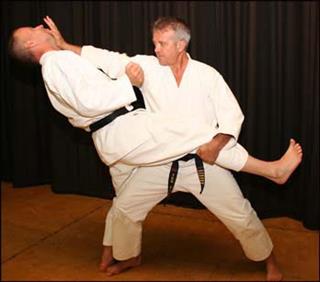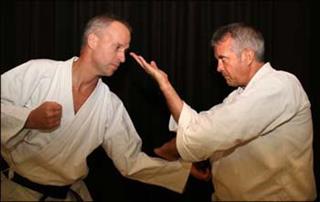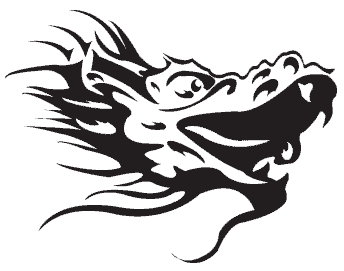Shisochin Kata
('Four directions of battle' or 'Four ways to see')
This kata stresses four directional fighting, when performing you should imagine striking and pushing away four opponents in four different directions. As you strike, power is concentrated in the palm heel and your tantien, exhale as you strike.
There are two competing theories to explain the origin of the kata Shisochin: The first that the shape or style comes from Fujian White Crane or the Tiger - Shaolin kung fu, the other suggests it is from the Mantis style or Cricket school of Shaolin boxing, possibly even from Dragon stylists. Shisochin, or in Fujain dialect Shisauchin, is representative of the movements of a cricket or preying mantis. The opening kame (guard posture) and nukite (finger thrust) in Shisochin are the mantis hooking its prey and devouring it. The forward stance (Zen kutsu dachi) with the arms extended is indicative of the cricket spreading its wings. As well as these pushing techniques, which create distance between you and your opponent, the kata also contains techniques for close in combat such as joint locks and attacks.
This kata stresses four directional fighting. When performing you should imagine striking and pushing away four opponents. As you strike, power is concentrated in the palm heel and tanden (Tientien). and you exhale as you strike. In additional to pushing techniques, which create distance between you and your opponent, the kata also shows techniques for close in combat such as joint locks and attacks. In combat if you fail to distance yourself from your attacker, the close combat techniques of the kata can be used effectively.


Warning:
If you perform any technique shown here in class or in public, you do so at your own risk.
We assume no responsibility for the use or misuse of the information provided which results in injury or loss.
Copyright: Tom Hill 2012 Goju.co.uk All rights reserved.
UPDATED 1st AUG 2020

































